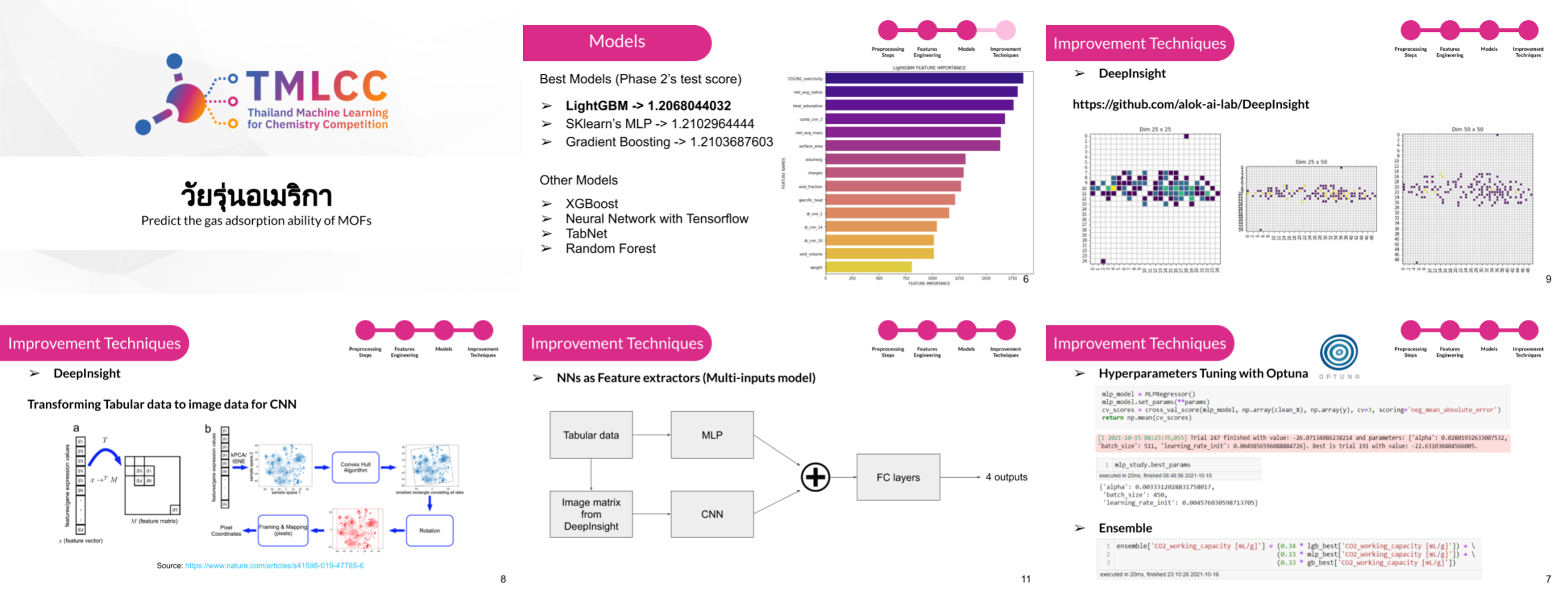Ariya Sontrapornpol
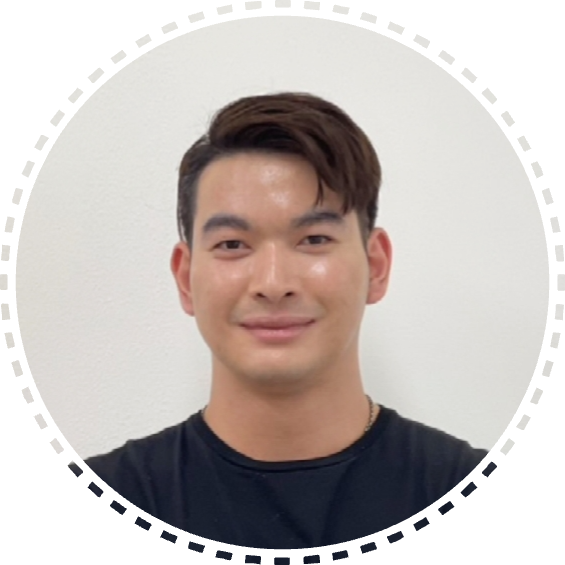
Resume | LinkedIn | YouTube | GitHub
I am a Machine Learning Engineer focusing on MLOps and ML Solution Architecture. I love turning ideas into products that have a positive impact on the world. :)
email - jomariya23156@gmail.com
Skills
- Programming languages: Python, SQL, JavaScript, C++, C
- MLOps/DevOps: Docker, Kubernetes, Helm, MLflow, ClearML, Git, DvC, Airflow, Prefect, GitHub Actions, Gitlab CI, FastAPI, Flask, Gunicorn, Nginx, Grafana, Prometheus, Evidently, GCP, AWS
- Machine Learning: TensorFlow, Keras, PyTorch, Scikit-learn, Prophet, spaCy
- Other: NLP, LangChain, Kafka, Ray, Spark, Streamlit, OpenCV, Postgres, pytest, HTML, CSS, React
- Expertise: Computer Vision, Medical Imaging, ML System Design, ML Solution Architecture
Work Experience
Machine Learning Engineer at Perceptra
Feb 2022 - Jul 2024 (2 years and 6 months)
Deployed machine learning models to 100+ hospitals nationwide, accelerating cancer detection, to save lives.
Accomplishments
- Enhanced existing model serving, achieving 3-4x faster inference time by resolving bottlenecks.
- Designed model serving architectures for 14+ disease prediction services (averaging 85%+ AUC), covering a wide range of model types.
- Revised Docker-based ML platform and infrastructure for 35% smaller image size and 3x faster builds.
- Streamlined ML workflow under strict data privacy restrictions, boosting team efficiency and system reliability.
- Optimized CICD pipelines with Gitlab CI, automating testing, builds, and deployment resulting in faster deployment times and eliminating manual work.
- Developed a YOLOv7 model to identify artifacts in mammogram images, achieving 83% mAP@0.5. This enabled dataset cleansing for improved downstream model performance.
- Developed outlier detection models and pipelines, purging 1% of low-quality data; boosted AUC by 1.7%, sensitivity by 1.6%, and specificity by 2.5% across diseases.
- Introduced MLOps best practices, including data versioning (DvC) and drift detection (Evidently, alibi), and translated leading-edge academic research into production-ready solutions.
AI Engineer Intern at Obodroid
Jun 2021 - Jul 2021 (2 months)
Enabled surveillance robots to recognize where they are.
Accomplishments
- Involved in the “Place Recognition” part of the Robot Navigation project.
- Collected data from the real working environment.
- Adapted SuperGlue model to do Visual Place Recognition task.
- Implemented a lot of utility files for image/video processing and running inference.
- Built a complete pipeline from raw data input to place recognition results.
- Built an end-to-end API to do Visual Place Recognition with SuperGlue and SuperPoints model using FastAPI. (GitHub)
Projects
Sales Forecast MLOps at Scale
Key Features
- Dual-Mode Inference: Supports both batch and online inference modes, providing adaptability to various use cases and real-time prediction needs.
- Automated Forecast Generation: Airflow DAGs orchestrate weekly model training and batch predictions, with the ability for on-demand retraining based on the latest data.
- Data-Driven Adaptability: Kafka handles real-time data streaming, enabling the system to incorporate the latest sales information into predictions. Models are retrained on demand to maintain accuracy.
- Scalable Pipeline and Training: Leverages Spark and Ray for efficient data processing and distributed model training, ensuring the system can handle large-scale datasets and training.
- Transparent Monitoring: Ray and Grafana provide visibility into training performance, while Prometheus enables system-wide monitoring.
- User-Friendly Interface: Streamlit offers a clear view of predictions. MLflow tracks experiments and model versions, ensuring reproducibility and streamlined updates.
- Best-Practices Serving: Robust serving stack with Nginx, Gunicorn, and FastAPI for reliable and performant model deployment.
- CI/CD Automation: GitHub Actions streamline the build and deployment process, automatically pushing images to Docker Hub and GCP.
- Cloud-native, Scalability and Flexibility: Kubernetes and Google Cloud Platform ensure adaptability to growing data and workloads. The open-source foundation (Docker, Ray, FastAPI, etc.) offers customization and extensibility.
Tools / Technologies
- Platform: Docker, Kubernetes, Helm
- Cloud platform: Google Cloud Platform
- Experiment tracking / Model registry: MLflow
- Pipeline orchestrator: Airflow
- Model distributed training and scaling: Ray
- Reverse proxy: Nginx and ingress-nginx (for Kubernetes)
- Web Interface: Streamlit
- Machine Learning service deployment: FastAPI, Uvicorn, Gunicorn
- Databases: PostgreSQL, Prometheus
- Database UI for Postgres: pgAdmin
- Overall system monitoring & dashboard: Grafana
- Distributed data streaming: Kafka
- Forecast modeling framework: Prophet
- Stream processing: Spark Streaming
- CICD: GitHub Actions

Full-stack On-Premises MLOps system for Computer Vision
Tools / Technologies
- Platform: Docker
- Workspace: Jupyter Lab
- Deep Learning framework: TensorFlow
- Data versioning: DvC
- Data validation: DeepChecks
- Machine Learning platform / Experiment tracking: MLflow
- Pipeline orchestrator: Prefect
- Machine Learning service deployment: FastAPI, Uvicorn, Gunicorn, Nginx (+ HTML, CSS, JS for a simple UI)
- Databases: PostgreSQL (SQL), Prometheus (Time-series)
- Machine Learning model monitoring & drift detection: Evidently
- Overall system monitoring & dashboard: Grafana
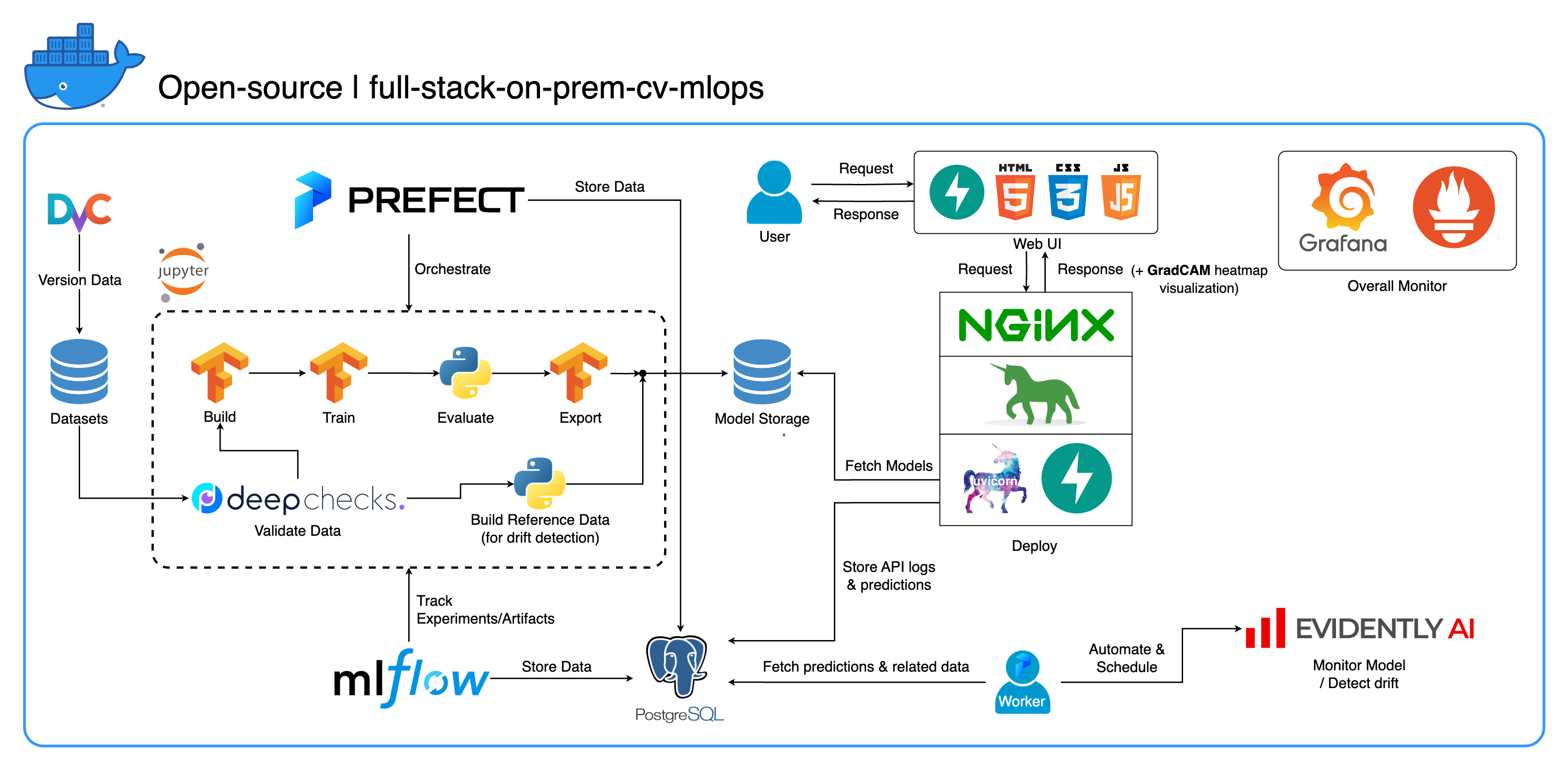
Real-time Webcam Background Replacement Web Application
Key Features
- Dymanic background: Replace the webcam background with a selected prepopulated image or one uploaded by the user.
- Background model options: Two available models for background segmentation: Mediapipe (default) and ‘apple/deeplabv3-mobilevit-xx-small’ from Hugging Face.
- Cartoonification: Cartoonify webcam stream with two options: OpenCV (Sequence of image processings) and CartoonGAN (Deep learning model).
- Image filters: Apply filters to the webcam stream. Available filters include Grayscale, Saturation, Brightness, and Contrast.
- Reliability: Supports concurrent connections.
- Docker-based: The entire app is dockerized.
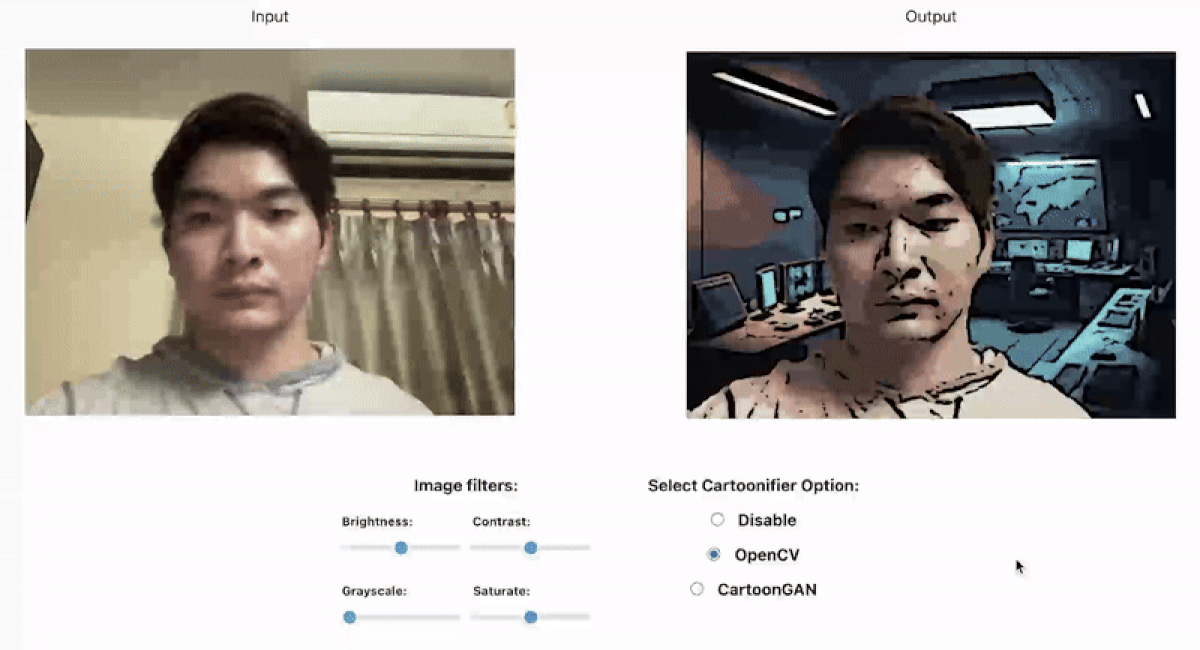
Face Recognition with Liveness Detection Login on Flask Web application
Contributions
- Implemented the face liveness detection method proposed in a research paper (link).
- Collected data for real and fake images for binary classification.
- Built and trained the CNN-based liveness model from scratch with TensorFlow.
- Implemented the web application with Flask framework.
- Used dlib for face recognition.
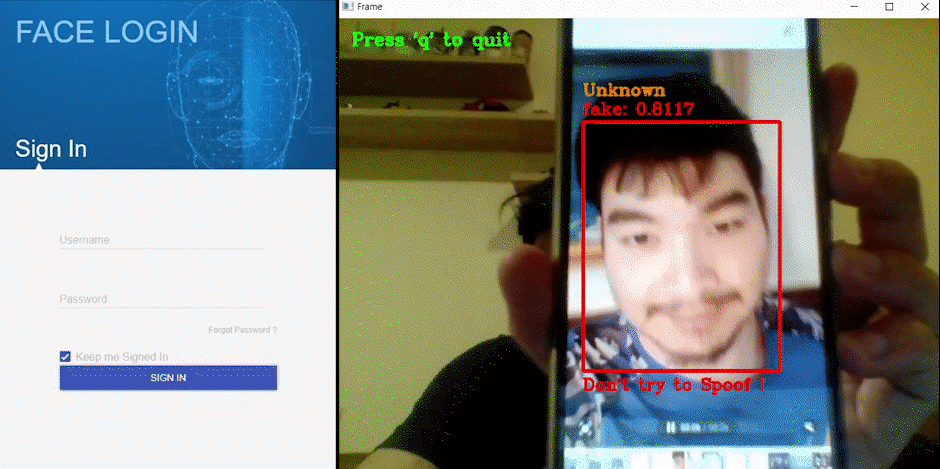
EzFit: Startup MVP
Pain point: People are bored of exercise and lack motivation.
Solution: Gamification and Multi-user Empowered by AI.
Accomplishments in Business Aspect:
- Led and envisioned a team of 5 people from different backgrounds.
- Built a full startup plan from scratch, a financial model, and a marketing plan.
- Built a pitch deck and pitched to many entrepreneurs and investors.
- Did market validation to validate the feasibility of the solution and understand customer behavior.
Accomplishments in AI / App Development Aspect:
- Analyzed and drew insights with data analytics from a market validation survey.
- Collected and preprocessed data for exercise repetition counting.
- Adapted pre-trained Pose Estimation model and trained Exercise Classification models for classifying and counting the repetition of 7 exercises.
- Achieved high accuracy across all exercises: 99% for push-up, 96% for jumping-jack, 92% for squat, 91% for leg-raise, 84% for lunge, 84% bicycle-crunch, 72% for mountain-climber.
- Optimized and deployed real-time ML models on the mobile device using TensorFlow ecosystems.
- Built a cross-platform mobile application using React Native.
- Implemented and took care of everything in the main gameplay part.
Awards:
- Received a grant and advanced to demo day at Startup Thailand League 2021, one of the largest startup competitions in Thailand.
- Finalist at INNO for Change 2021, a competition organized by one of the top-tier business universities in Thailand.
Main tools: React Native, Expo, Firebase, TensorFlow, TensorFlow Lite, TensorFlowJS, Mediapipe

Competitions
There are a lot of competitions I have attended, but here are the ones I’ve learned the most from and I’m allowed to open-source the work.
Thailand Machine Learning for Chemistry Competition (TMLCC)
We placed in 6th place from over 200+ teams nationwide. Here are the main techniques we applied that made us stand out:
- Create many new features from feature engineering with domain expertise in Chemistry subject.
- Fill missing values in some features with Multivariate Imputation by Chained Equation (MICE) technique and Chemistry formula.
- Select features using backward elimination along with SHAP values.
- Do hyperparameters tuning with Optuna.
- Use DeepInsight to transform tabular data into images and train a downstream CNN model.
- Use the trained CNN as a feature extractor to extract more features and append them to train along with other original features with LightGBM. This gave us the best standalone model!
- Ensemble models with a weighted average strategy by giving higher weight to the results from more accurate models.
